3d Building Art ââ“ Building Tunnel Country and City?
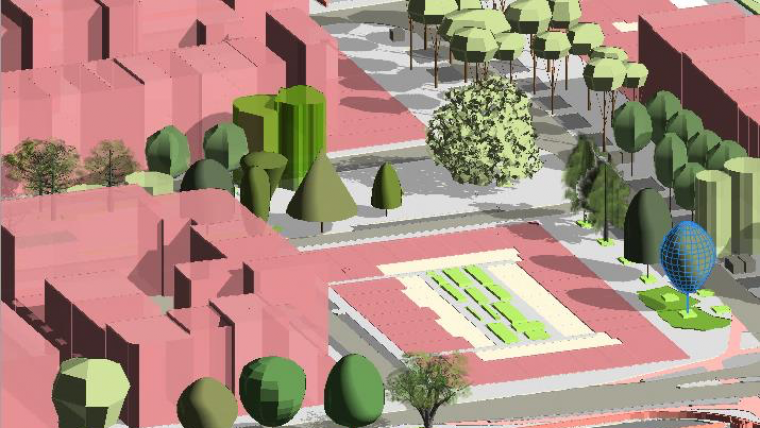
Article
Land of the Art in 3D Metropolis Modelling
Six Challenges Facing 3D Data equally a Platform
Semantically enriched 3D city models accept the potential to be powerful hubs of integrated information for computer-based urban spatial analysis. This article presents the state of the art in 3D metropolis modelling in the context of broader developments such equally smart cities and digital twins, and outlines six challenges that must be overcome before 3D data every bit a platform becomes a reality.
(This article is a co-product of vii authors, all of whom are mentioned at the terminate of the text.)
3D city models, as digital representations of urban areas, can exist used to facilitate many applications, such as urban wind and dispersion simulations, energy studies, noise studies and various types of analysis that require a planned architectural pattern to exist placed in its context (e.g. line of sight and shadow analysis, clash detection with cables and pipelines in the underground, impact of wind apportionment, run into Figure 1). These 3D models, which also contain semantics, are dissimilar from 3D meshes (equally found in reckoner graphics and the gaming earth) and from raw point clouds. These can be used for visualization and visual analysis, but they are non suitable for most other spatial analysis purposes.
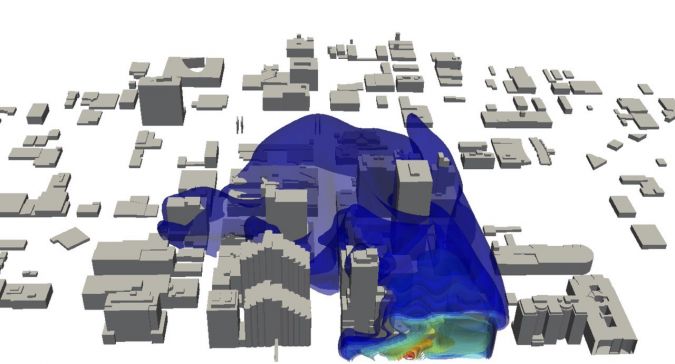
In gild to permit for the development of avant-garde applications, a 3D city model should describe the geometry and attributes of all the individual elements that are typically present in a metropolis, e.yard. the terrain, roads, water bodies and buildings (Figure ii). In addition, relevant semantic information tin be included with the geometries, such as the year a building was constructed, the number of people living in information technology and the construction materials information technology is fabricated of – all of import information to optimize round economy flows or energy consumption. Such semantically enriched 3D metropolis models potentially represent powerful hubs of integrated information to exist used for reckoner-based urban assay purposes, including in the context of broader developments such as smart cities and digital twins.
Advances in technologies for the collection of 3D elevation information through Lidar and photogrammetry accept fabricated information technology relatively easy for practitioners in unlike fields to automatically reconstruct 3D city models (run into Figure 3 for a couple of examples). These models typically contain mainly buildings, merely other object types are increasingly being included too, such as roads, bridges, copse (see Figure four) and water. The availability and applications of 3D models are all the same increasing in the fields of urban center planning and environmental simulations, as listed above. Furthermore, since elevation data tin can exist acquired at relatively low toll, this information tin can exist oft updated. Information technology is also possible to reconstruct 3D city models covering the same region at different periods in time.
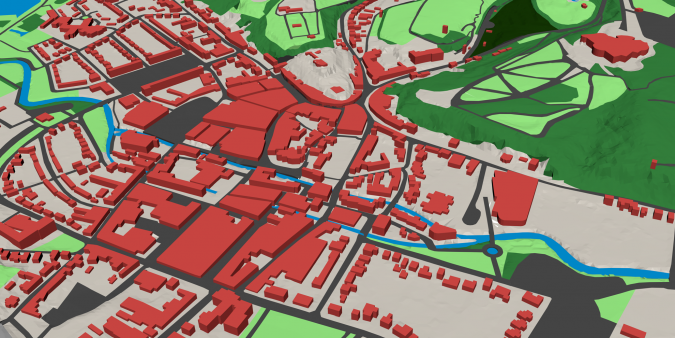
3D city models have the potential to play a crucial role in shaping the hereafter. This holy grail of 3D city models that goes across 3D visualization requires an integrated approach to 3D metropolis modelling based on the implementation of 3D data as a platform. In this approach, the same upwardly-to-date, 3D virtual representation of reality serves different urban applications and at the same time offers an environs for integrating the findings of different applications. However, earlier 3D data as a platform becomes a reality, the post-obit challenges must be overcome:
Challenge 1: Consistency between Models
The showtime challenge is the lack of consistency between 3D city models covering the aforementioned expanse. Currently, 3D metropolis models are generated independently, often using different base (sensor) data, reconstruction methods and software. Therefore, the resulting models frequently significantly differ in their geometry (e.yard. a collection of surfaces versus a volumetric representation), appearance and semantics. Moreover, equally these models are stored using different formats (XML, graphics or binary formats), their underlying information models oftentimes as well differ. Substantial differences can even occur when models that were originally identical are processed independently, either through mismatched updates or through conversions between dissimilar formats (e.g. in an attempt to deal with software incompatibilities). All these differences have profound consequences in practice, such every bit affecting the applications for which a 3D model tin be used, the processing that is necessary to use it and the likely errors that will be present in the end result. It is thus important to be aware of the manner 3D city models are modelled and to provide this information explicitly in the metadata of the model.
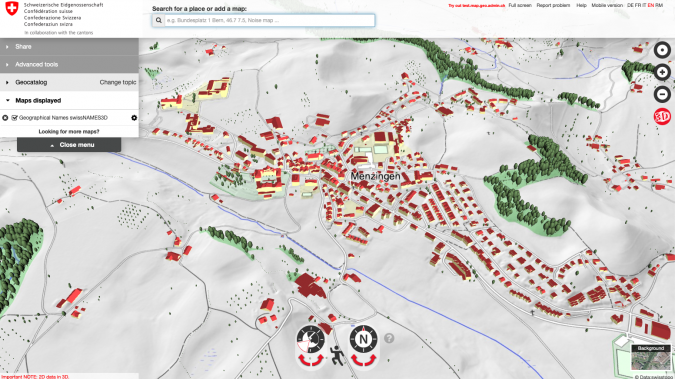
Challenge 2: Standardization
To ensure consistency, both for geometry and semantics, standardization is essential. The OGC standard CityGML is the main standard for storing and exchanging 3D semantic city models. Its aim is to ascertain the basic classes that tin can be used to describe the most common types of objects present in a 3D urban center model, their components, their attributes and the relationships between different objects. Although about CityGML examples and datasets focus on buildings, CityGML also represents other feature classes, such as land use, relief, roads and railways, vegetation, bridges and city furniture. While CityGML prescribes a standard information model for a 'generic' urban center, it is possible to extend it for specific domains by defining application domain extensions (ADEs), such equally for the energy demand of buildings or for a country-specific information model. The main result with ADEs is that software packages and libraries often cannot automatically read and process the application-specific data from them because extensions do not demand to follow many prescribed rules.
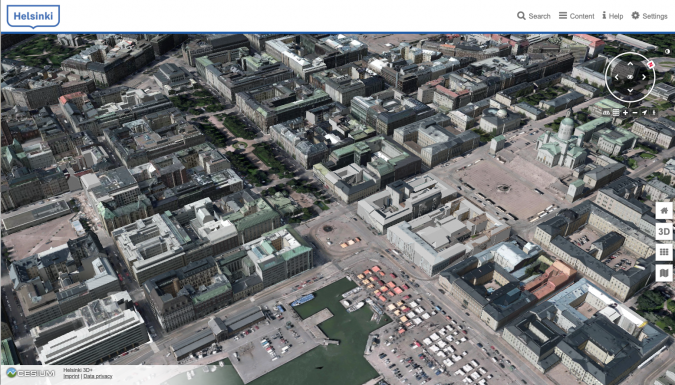
CityGML is used both as an information model (in the form of UML models of its classes) and an encoding model, which is an XML-based representation using geometric definitions from the Geography Markup Language (GML). One claiming when working with CityGML-encoded data is that software support for CityGML is still express. This is partly due to the huge number of possible ways in which objects can be defined in CityGML, which makes full implementation difficult (i.due east. the software needs to back up all possible situations). In addition, XML (and thus GML) tin be verbose and complex, which makes information technology impractical for many applications.
There are other solutions that implement the CityGML data model to overcome these problems. One is 3DCityDB, which is an open up-source database, congenital upon Oracle Spatial or PostGIS, to shop the CityGML information model in a relational database. Some other alternative to CityGML encoding is CityJSON, which is a format that encodes a subset of the CityGML data model using JavaScript Object Note (JSON). CityJSON was designed with programmers in heed, so that tools and APIs supporting it tin be quickly built. Information technology is besides designed to be compact, with a compression factor of around six when compared to XML-based CityGML files, and is friendly for spider web and mobile development (i.due east. information technology supports the use of 3D information across exchanging data). CityJSON v1.0 was released in 2019 and is supported in several software packages including viewers, 3D modellers, 3D metropolis model generators and GIS software (Effigy 5).
Challenge 3: Data Quality
Quality – or lack of it – is some other consequence that limits the sharing of 3D city models betwixt different software systems and applications. As highlighted past Biljecki et al. (2016), almost openly available 3D city models incorporate many geometric and topological errors, east.m. duplicate vertices, missing surfaces, self-intersecting volumes, etc. Often, these errors are not visible at the calibration on which the datasets are visualized or they are non a trouble for the specific software in which they are modelled. As a consequence, practitioners are unaware of the issue. However, these errors forbid the datasets from existence used in other software and for advanced applications, and that is essential to facilitate 3D data every bit a platform. All these geometric errors could be prevented if modelling software forced the 3D geometries to comply with ISO 19107, i.due east. connecting surfaces, planar surfaces, correct orientation of the surfaces, watertight volumes, etc. Another solution to this trouble could be to use automated repair algorithms. However, these are withal frequently semi-manual, plus it is possible that fixing one error could introduce a new one elsewhere.
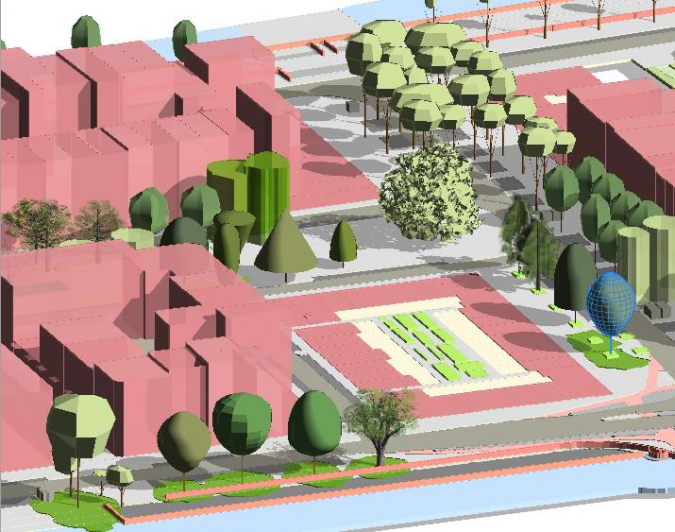
Claiming 4: Data Interoperability
The conversion of semantic 3D urban center models from i format to another is challenging, both from a geometric signal of view and considering of incompatible semantics. In the example of the IFC standard used in edifice data modelling (BIM), it is desirable to integrate into a 3D city model the highly detailed models that take already been generated for the design and structure of a building. However, the automated conversion betwixt IFC models and CityGML models is not straightforward. For a building which is modelled co-ordinate to both standards, for case, the mappings between the semantic classes are complex because unlike semantic information is attached to the geometrical primitives in the two models. Moreover, IFC has many more classes, whereas CityGML contains a express number of classes structured in a hierarchy. In addition, a elementary house can easily be made up of a thousand volumetric elements in IFC, whereas in CityGML it contains just the outer vanquish and a few other elements such as doors, windows and chimneys. As a consequence of these differences in semantics, coupled with the fact that dissimilar software and geometric modelling paradigms are used, information technology is rather difficult to reuse data from other domains. OGC (2016) and Arroyo Ohori et al. (2018), among others, explain in more detail the issues preventing automation of the procedure and provide recommendations for better alignment of both standards. This requires a amend understanding of how detailed BIM models are needed in GIS-based applications and how GIS-contextual data can be better accessed from BIM software. Deriving the GIS-relevant concepts from a detailed BIM model that can act as an interface between both domains is considered as a crucial step forrad (encounter Figure 6). In addition, georeferencing of BIM models is needed to be able to locate them in their geographical context.
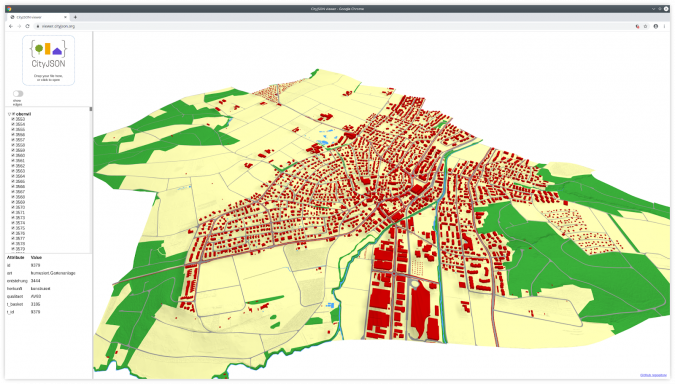
Challenge 5: Data Maintenance/Governance
Many governmental organizations accept invested in their ain 3D city models. However, despite growing awareness of the importance of up-to-date 3D urban center models, they often neglect to put strategies in place for updating the models and maintaining different versions of the data. One potential method to do and so would be to employ data virtually new designs structured in IFC/BIM models. However, this requires proficient agreements regarding the design data to exist submitted and the preprocessing of the IFC/BIM data (e.chiliad. deriving georelevant concepts such equally the footprint and outer envelope in a georeferenced context), likewise every bit organizational/institutional agreements (i.e. Who is responsible for the data? How can it be ensured that the IP of the architect/designer is respected?).
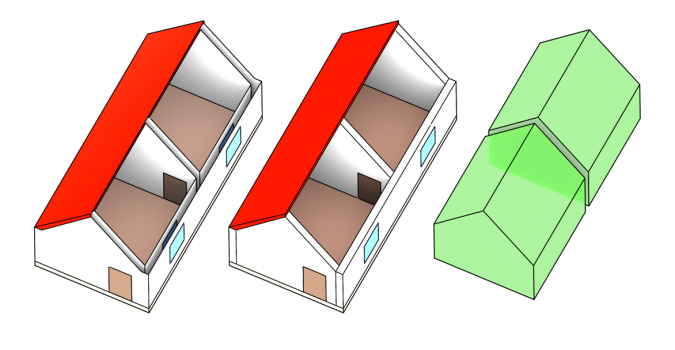
Claiming six: From Utopian Pilots to Real-world Use Cases
Technical innovations regarding 3D data usage that look promising in prototypes and pilots may encounter problems in practice. A existent-world production setup usually covers larger areas and requires more automation, which can make it more difficult to monitor and command the information quality. In addition, solutions that work well for modest examination areas are pushed beyond their limits (both in terms of performance and situations they accept to encompass) when applied to big areas like complete cities or fifty-fifty countries. Further attention is therefore needed to obtain higher-quality 3D urban center models and building models so that they can indeed course the footing for a 3D data platform serving a wide variety of urban applications. This requires more precise definitions of specifications, also as validation mechanisms to check whether the 3D data acquired meets those specifications. 'Higher quality' does not necessarily mean 'greater precision'; it means upward-to-date 3D data without errors and aligned with the specific needs of urban applications rather than serving visualization purposes just.
Not all challenges facing 3D data as a platform are technical ones. Organizations that want to implement 3D as a platform oft lack the latest cognition and skills to practise so. This can range from gaps in their knowledge of issues regarding the conquering, maintenance and dissemination of 3D data, to a lack of understanding of urban data quality, how to express it in metadata and how data quality impacts on the outcome of urban applications. There are also institutional and organizational issues facing 3D data, due east.g. what 3D data should be available, where and how it should be bachelor, who is responsible for updates and maintenance, and how to integrate larger-calibration public-sector 3D city models with detailed private-sector architectural models of individual buildings.
Conclusions and Hereafter Outlook
More than and more 3D city models are becoming available at different levels of detail, for different periods in time and for different applications. Information technology is therefore important to have adequate means to store such historical collections of 3D urban center models in a manner that is both standardized and structured with semantics. The ability to interpret the physical world into a virtual reality has become a valuable asset in the blueprint, planning, visualization and direction of a wide range of urban applications such as noise, heat stress, pollution, etc. However, an increase in complexity (i.e. 3D city modelling beyond visualization) oftentimes comes at the expense of usability, interoperability and maintenance. Electric current practices still bear witness a lack of specific and user-friendly software to deal with 3D metropolis models, as well as several disconnected and inefficient software options, while data integration is an inherent component in 3D metropolis modelling. This integration needs further attention in guild for 3D metropolis models to serve as 'digital twins' of reality and provide information for a broad diversity of applications. The integration of sensor data in a 3D city model is some other surface area that needs further development to plough 3D metropolis models into dynamic representations of reality. Lastly, the integration of highly detailed and differently structured IFC/BIM models remains an area for further study as well as for further agreements to support integration.
This article has listed the electric current challenges standing in the way of 3D urban center models being used for sustainable urban environments. Based on this list, it may seem every bit though a lot still needs to exist done. While that is true, over the by decades there has of course been a huge increase in the number of 3D metropolis models available and many developments in terms of acquiring, modelling, maintaining, using and visualizing them. All of this has laid a foundation for realizing the potential of 3D city models. By tackling the challenges described in this article, another major step tin be taken then that the 3D city model indeed volition become a powerful information hub that can be used for computer-based urban analysis.
Acknowledgements
This project has received funding from the European Research Council (ERC) nether the European Union's Horizon 2020 research and innovation plan (Grant Understanding No. 677312 UMnD).
Further Reading
- Arroyo (2018) Ohori, K, Abdoulaye Diakité, Thomas Krijnen, Hugo Ledoux and Jantien Stoter. 2018. Processing BIM and GIS models in practice: experiences and recommendations from a GeoBIM project in the Netherlands. ISPRS International Journal of Geo-Information 7(viii), August 2018.
- Biljecki et al. (2016). The well-nigh common geometric and semantic errors in CityGML datasets. F. Biljecki, H. Ledoux, 10. Du, J. Stoter, Yard. H. Soon and V. H. S. Khoo. ISPRS Ann. Photogramm. Remote Sens. Spatial Inf. Sci., 2016, pp. 13–22.
- OGC (2016) Open Geospatial Consortium inc., 2016. OGC. Futurity City Pilot-i: Using IFC/CityGML in urban planning engineering report. http://docs.opengeospatial.org/per/xvi-097.html
- Ortega-Córdova (2018), Lessie 1000., Framework for Urban Vegetation 3D Modelling. MSc thesis,, https://repository.tudelft.nl/islandora/object/uuid:8b8967a8-0a0f-498f-9d37-71c6c3e532af?drove=education
- Sanchez (2017), Quantifying arrival uncertainties for CFD simulations of dispersion in the atmospheric purlieus layer, García-Sánchez, Clara, PhD thesis, Antwerp Academy, Sciences Faculty, https://hdl.handle.cyberspace/10067/1460450151162165141
Prof Dr Jantien Stoter
Most the authors
Dr Ken Approach Ohori is a postdoc researcher in the 3D Geoinformation inquiry group. His enquiry interests include higher-dimensional (4D+) GIS representations and algorithms, geometric modelling and processing, GeoBIM integration and automatic information repair.
Balázs Dukai, MSc, is a research software engineer in the 3D Geoinformation inquiry group. His focus is on methods for generating datasets, and writing software.
Anna Labetski, MSc, is a PhD candidate in the 3D Geoinformation research grouping, focusing on the generalization of 3D city models. Her enquiry interests include generalization, levels of detail, transportation networks, active transportation and metadata.
Kavisha Kumar, MSc, is a PhD candidate in the 3D Geoinformation grouping. Her inquiry includes compact representation of massive 3D city models for efficient storage and management.
Stelios Vitalis, MSc, is a PhD candidate in the 3D Geoinformation group. His enquiry interests are versioning of 3D metropolis models, multi-dimensional GIS data, topological data structures and GIS software development.
Dr Hugo Ledoux is an acquaintance professor in the 3D Geoinformation research group. His piece of work is more often than not focused on semantic city modelling and computational geometry.
Keep beside of news, developments and technological advancement in the geomatics manufacture.
Sign up for freeSource: https://www.gim-international.com/content/article/state-of-the-art-in-3d-city-modelling-2
0 Response to "3d Building Art ââ“ Building Tunnel Country and City?"
Post a Comment